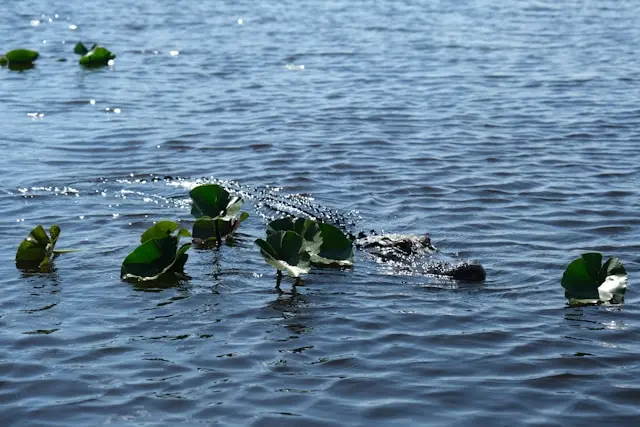
Recognized as a UNESCO World Heritage Site and International Biosphere Reserve, Everglades was named one of the world’s top 500 endangered attractions in 1993. Returning after six years, I found that many landscapes had changed significantly.
Essential Information
• Park Fees: $25 per vehicle (up to 7 passengers). U.S. National Parks Annual Pass accepted.
• Opening Hours: Open year-round, 24/7.
• Best Time to Visit: Dry season (December to April) is ideal for exploring, while the wet season brings abundant mosquitoes.
Exploration Routes
Visitor Centers
The park is vast, with two main visitor centers:
1. Ernest Coe Visitor Center
• Located in the southern section, this center provides detailed information about the park and its trails.
• Address: 40001 State Road 9336, Homestead, FL 33034
• GPS: 25°23’42.97” N 80°34’59.36” W
2. Shark Valley Visitor Center
• Located in the northern section, this area focuses on wetlands and marshes.
• Address: 36000 SW 8th Street, Miami, FL 33194
• GPS: 25°45’60.00” N 80°46’01.01” W
Note: The two visitor centers are not connected by internal roads, so you’ll need to drive outside the park to visit both.
Ernest Coe Visitor Center Highlights
We only had half a day to explore, so we focused on the Ernest Coe area. For those planning to visit both areas, allow extra time—driving between the two centers takes over an hour.
1. Royal Palm Trail
• A short trail (20–30 minutes) featuring boardwalks through natural habitats. It’s one of the best spots to see alligators, turtles, and birds up close.
2. Flamingo Visitor Center
• Drive about an hour to reach the Flamingo area, where freshwater rivers meet the ocean. You can rent canoes, kayaks, or bikes to explore.
Boat Tours:
• Whitewater Bay Backcountry Tour: A 90-minute journey departing at 11:00 AM, 1:00 PM, and 3:00 PM. This tour navigates through Buttonwood Canal to the entrance of Whitewater Bay.
• Florida Bay Tour: Another 90-minute trip departing at 12:00 PM, 2:00 PM, and 4:30 PM (timing adjusts seasonally).
• Tickets: Purchase at the Marina Store near Flamingo Visitor Center.
• Note: Boat tours are weather-dependent, so call ahead to confirm.
Shark Valley Visitor Center Highlights
This northern section is ideal for observing wetlands and alligators. The main route leads to the Shark Valley Observation Tower, offering panoramic views of the Everglades.
Dining and Accommodation
Dining
There are no restaurants within the park, only vending machines near visitor centers and a small convenience store near the Marina. Bring enough food and water to sustain your visit—don’t make our mistake of relying on instant noodles!
Accommodation
• Camping:
• Long Pine Key Campground (near Homestead Entrance)
• Open from November 1 to April 30; $20 per night. Facilities include restrooms, showers, and picnic areas.
• Hotels:
• Stay in nearby Florida City or Homestead for affordable accommodations with breakfast included. These areas also have Walmart Supercenters and Asian grocery stores to stock up on essentials before your visit.
Tips for Visiting
• Bring sunscreen, insect repellent (especially for summer), and plenty of water and snacks.
• Keep an eye on children and maintain a safe distance from wildlife.
• Stay at least 4 meters away from alligators. While alligators inside the park are generally harmless, be cautious outside the park.
• Feeding wildlife is strictly prohibited.
Conclusion
Everglades National Park offers a unique mix of adventure and tranquility. Whether you’re exploring its trails, kayaking through mangroves, or spotting dolphins on a boat tour, the park is a natural treasure that shouldn’t be missed!
